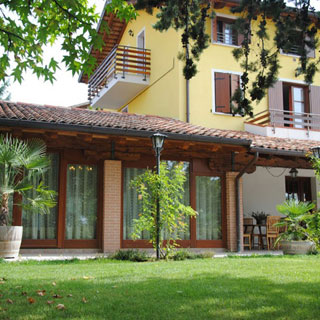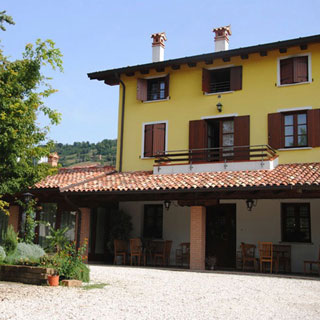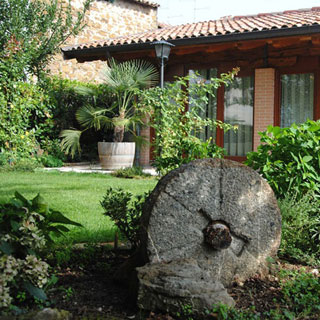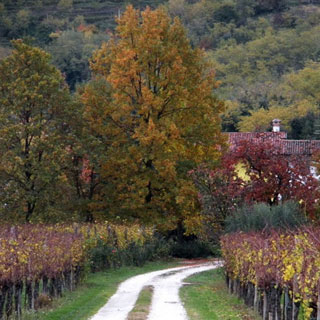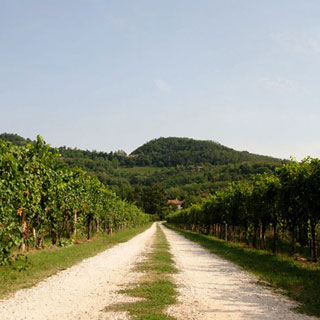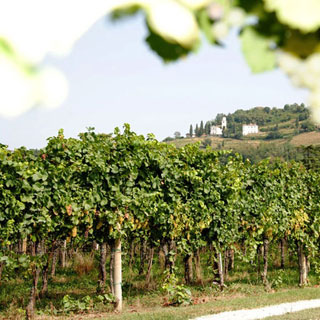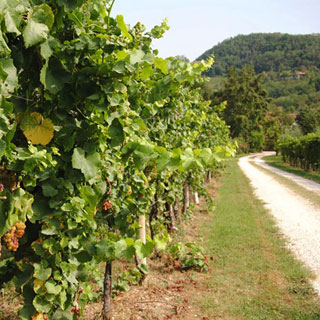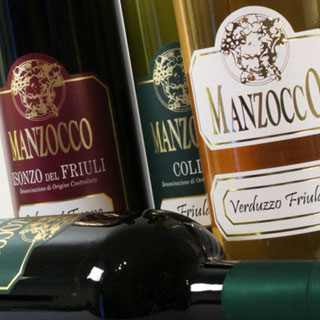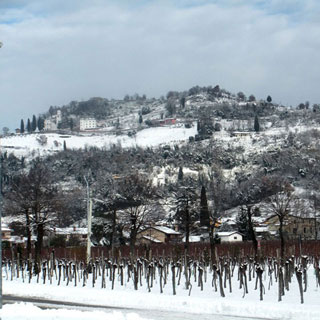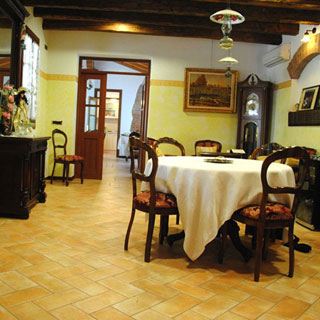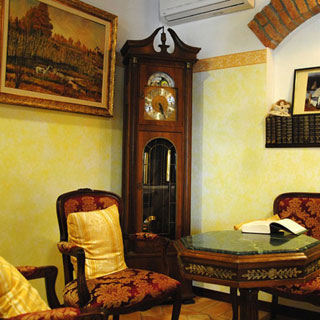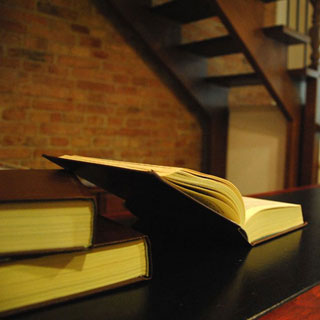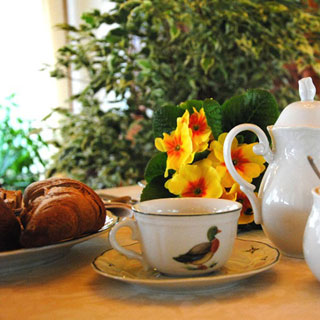We offer you some interesting day trips
One day trip
Coming on holiday with us allows you to make beautiful excursions that will introduce you to our beautiful land and for this reason, we have decided to give you some suggestions.
We are located in the center of the enchanting hilly area called Collio.
Cormons is a beautiful Habsburg-style town and is surrounded by small and characteristic villages on the border with Slovenia, such as Dolegna del Collio, San Floriano del Collio, Savogna d'Isonzo, where Slovenian is spoken.
Here, there is little distance from the mountains and the sea, so you will be spoiled for choice!
• Arrival in Cormons at 12:00, accommodation in the rooms and small aperitif
• Snack in a local area
• 15:00 visit to Cividale del Friuli
• Devil's Bridge
This visit deserves to know the legend of the Devil's Bridge. Legend has it that in ancient times the citizens of Cividale gathered in assembly to devise the way to build a solid stone bridge, which joined the two banks of the Natisone. Unable to accomplish anything, they called upon the Devil. The latter presented himself with a lot of red eyes, tail, horns, offering his help for the construction of the bridge but, in exchange, expecting the soul of the first Cividalese who would have passed through it. The assembly accepted the conditions of the Devil, who built the structure in a single night. There was also the intervention of the mother of the Evil One who carried a large boulder in her apron (the central pillar of the bridge still rests on the latter today) and placed it in the middle of the river. The next morning the Devil demanded the reward. However, he was deceived, in fact, the Cividalese made a dog (or cat according to another version of the legend) cross the bridge. The Devil tried to destroy the building but a Cross, followed by the people, put him to flight.
• Lombard Temple (15:00-18:00)
The Monastery of Santa Maria in Valle and the Lombard Temple were declared World Heritage Sites in 2011 as part of the serial site "Italia Longobardorum. The places of power (568-774)".
• Visit to the Sanctuary of Castelmonte (18:00)
The Castelmonte Sanctuary is very ancient: the oldest in Friuli and one of the oldest in all of Christianity.
• Cathedral (19:00)
The Cathedral dedicated to Santa Maria Assunta is the main church of Cividale del Friuli.
• Dinner in Cividale or in Cormons, walk in the center and visit to the Cormons Enoteca
• Departure (9:00)
• Guided tour of the Grotta Gigante of Trieste (10:00)
The hidden immensity of the Grotta Gigante gives those who visit it an exciting and unique underground experience. A specialized guide will accompany you for about an hour along a path of 850 meters.
• Visit to the Miramare Castle 9:00-19:00, Sunday afternoon is free
Near Trieste, on a rocky spur overlooking the sea, stands the Miramare Castle, once the southern gate of the Austrian Empire. A place of wonders where Princess Sissi stayed during her long travels in Europe. A treasure trove of history and legend that tells the tragic story of its founder, Maximilian of Habsburg. The first great legend that shrouds the Castle of Miramar in mystery wants that the spirit of Maximilian never left Trieste and that his ghost usually wanders every night in the large park of the castle, not having been able to enjoy it in life, gazing at the infinite plant species imported from all over the world.
• Visit Monte Grisa (view of the Gulf of Trieste) always open
From up there there is a unique view, with an incomparable view of Trieste. Worth a visit. The view over Trieste and its Gulf is wonderful.
• Piazza Unità d'Italia (parking on riva del Mandracchio or in via del teatro romano there is also a multi-storey Park San Giusto)
Piazza Unità d'Italia, in addition to being the main square in Trieste, is also the largest in Europe open to the sea. It is located at the foot of the Colle di San Giusto, between Borgo Giuseppino and Borgo Teresiano. It symbolizes the last ostentation of power of a great empire that has almost reached the end of its rule but which has contributed to making the city strong and solid.
• Visit to the Castle of San Giusto (10:00-17:00)
On the top of the hill overlooking Trieste stands the Castle, which can be considered the symbol of the city.
• Walk on the Rilke path in Sistiana
One of the most beautiful and evocative walks overlooking the Gulf of Trieste is certainly the one that, overlooking the sea, connects Sistiana to Duino. The path takes its name from the poet R.M. Rilke who, a guest at the Duino Castle at the beginning of the last century, as Dante had been before him, and here composed his famous "Duino Elegies".
• Return to Cormons
• Fish dinner in Sistiana
• Stop at the Redipuglia Memorial
The Redipuglia Memorial is the largest and most majestic Italian shrine dedicated to the fallen of the Great War. Built on the slopes of Mount Sei Busi on a project by the architect Giovanni Greppi and the sculptor Giannino Castiglioni, it was inaugurated on 18 September 1938 after ten years of work. This work, also known as the "dei Centomila" shrine, houses the remains of 100,187 soldiers who fell in the surrounding areas, partly already buried initially on the opposite Colle di Sant'Elia. Strongly desired by the Fascist regime, the shrine wanted to celebrate the sacrifice of the fallen as well as give a worthy burial to those who had not found space in the Invitti cemetery.
• If you choose this second option, you will have dinner in a restaurant in Cormons
• Aquileia, visit to the basilica and the bell tower
The patriarchal basilica of Santa Maria Assunta is the main religious building of Aquileia and the ancient cathedral church of the suppressed patriarchate of Aquileia. And with its 73 meters of height, the bell tower of the basilica of Aquileia stands out massively over the Friuli plain.
• Visit to old Grado and fish lunch
Grado is a little Venice, a town full of narrow streets and houses close to each other, one of those small towns to explore in half a day, with all the calm possible and here a fish lunch in one of its excellent restaurants is not to be missed!
• Coffee in the square in Palmanova
The main square of Palmanova is called Piazza Grande. It represents the fulcrum of city life, the heart of its historic center, the focus of the fortress. And we advise you to take a seat for coffee.
• Visit to the center of Udine: Castle, Duomo, Piazza della Libertà, Via Mercato Vecchio and Piazza Matteotti (living room of the city)
• Cities to visit nearby
Spilimbergo (Spiel im berg) city of mosaics: Spilimbergo is known as "the city of mosaics" for the presence of the prestigious Mosaic School of Friuli founded in 1922. There are many masterpieces of mosaic art to see, together with the medieval village it houses an evocative historic center with the beautiful Gothic Cathedral of Santa Maria Maggiore and the Painted Palace with frescoes that extend along the entire façade.
• San Daniele city of ham: Lying on a hill, San Daniele is the main center of Friuli Collinare
From here you can enjoy endless panoramas over gentle expanses of hills. The town is considered one of the pearls of Friuli Venezia Giulia, known internationally for the production of smoked trout and above all of a ham with an inimitable flavor, the result of a millenary tradition and a unique microclimate.
• Gemona (city rebuilt after the earthquake, cathedral and museum of reconstruction)
Symbol of the Friulian character, tenacious and hardworking, Gemona, nestled on the slopes of the Julian Pre-Alps, is one of the most beautiful historical locations in Friuli Venezia Giulia and in its historic center of medieval origin it holds precious treasures. The town, known worldwide as the capital of the 1976 earthquake that shook Friuli, is today one of the main symbols of the region's rebirth and is an example and model of a "successful reconstruction".
• Lunch at Malga Quarnan, it's always worth it
Farmhouse in a very pleasant place, surrounded by nature. Family atmosphere, typical Friulian cuisine!
• Borgo di Venzone, the most beautiful village in Italy (rebuilt after the earthquake) and Venzone mummies
The village of Venzone in Friuli Venezia Giulia is one of the most beautiful villages in Italy with the Cathedral, the Crypt of San Michele and the mummies. It is practically impossible not to be fascinated by the village of Venzone. The only walled fourteenth-century village in the whole of Friuli Venezia Giulia, declared a National Monument and the "ideal village where it is good to live" according to the European Community. Venzone, like the neighboring villages, was also destroyed, and perfectly rebuilt, following the earthquake of '76. Right in front of the Cathedral of Sant'Andrea there is the crypt of the former Chapel of S. Michele. The crypt holds 5 of the approximately 40 mummies found here. The mummies are so famous that even Napoleon wanted to visit them.
• Walk to the lake of Cavazzo and visit to Bordano, the village of butterflies
The largest of the Friulian natural lakes (it is 6500 meters long) bathes the territory of three municipalities, Cavazzo Carnico, Bordano and Trasaghis, with its waters, and offers tourists the opportunity to devote themselves to a wide range of outdoor activities . And being very close, a visit to the city of Bordano is interesting, known for being the House of Butterflies. The Butterfly House is a corner of tropical forest in Friuli Venezia Giulia. It is the largest exhibition of live butterflies and insects in Italy, with 1,000 square meters of heated greenhouses and as many of exhibitions and workshops.
• Return home
• Formentini Castle in San Floriano
The Formentini Castle in San Floriano, restored after the serious damage suffered in the two wars, is one of the best equipped tourist complexes in the region.
• Gorizia Castle
The Castle of Gorizia, dating back to the 11th century, is the ancient heart of the city. Located on the hill overlooking the town, the castle offers a spectacular panoramic view of Gorizia and the surrounding area.
• Coronini Cronberg Palace
Palazzo Coronini Cronberg is a historic residence dating back to the end of the sixteenth century. Today it is the seat of the homonymous Foundation.
• Ara Pacis Mundi on Mount Medea
The Ara Pacis Mundi in Medea is a monumental complex born in 1951 with the intent to symbolically remember the fallen of all wars.
• Rosazzo Abbey
The millenary Abbey, whose origins are not yet completely clear, represented in the past and still represents today, above all thanks to its geographical position, the connection point between West and East, where different cultures can meet and dialogue.

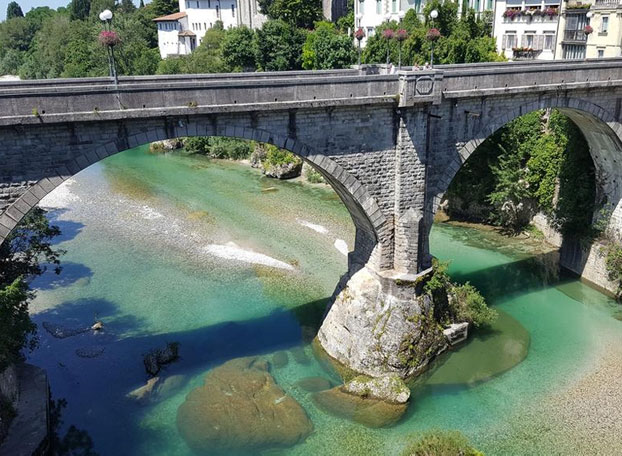
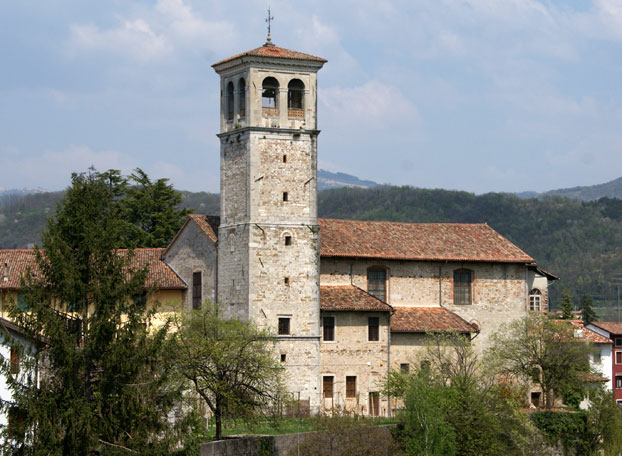


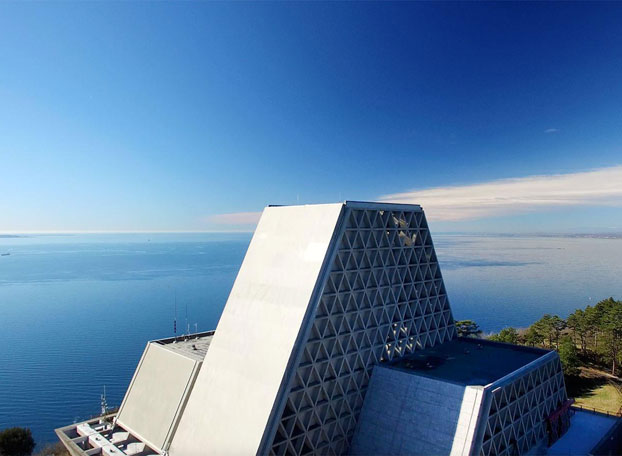

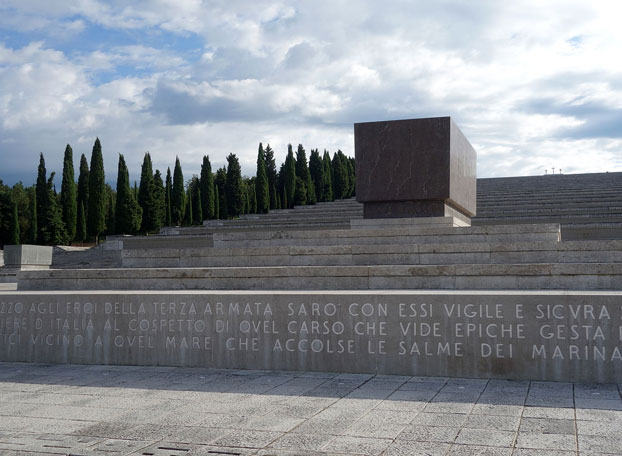
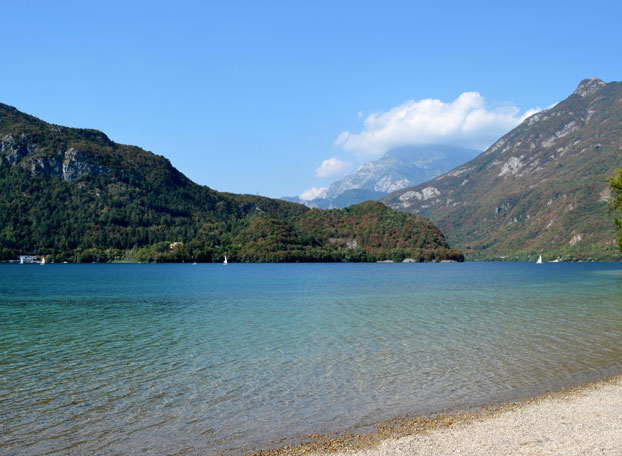
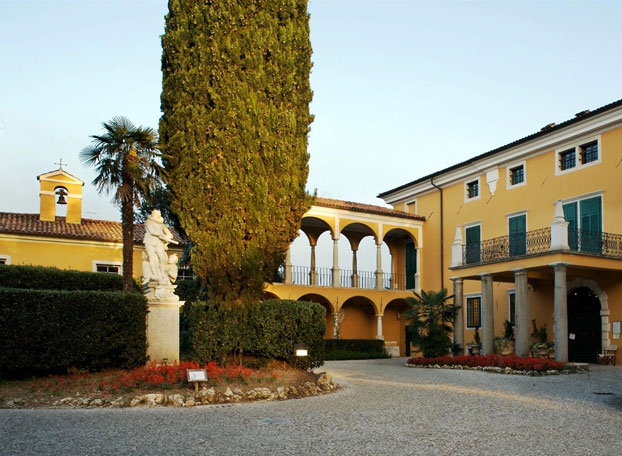
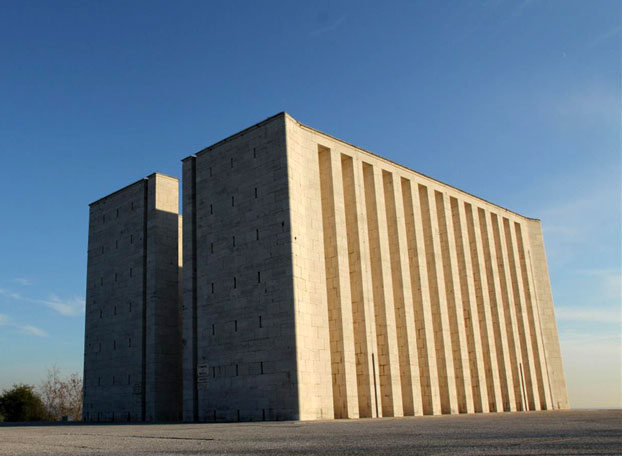
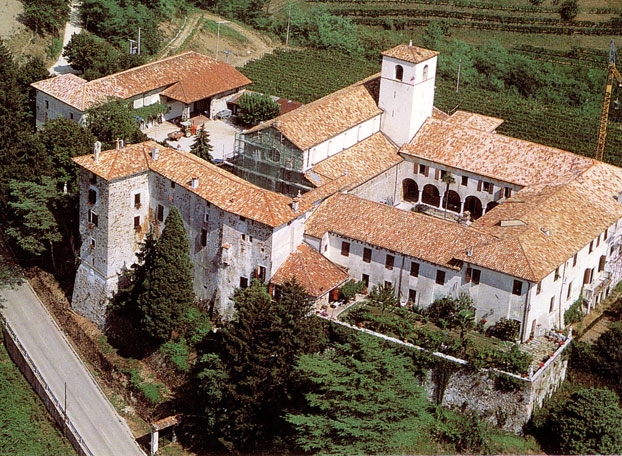
Location of the Farmhouse Al Benandant and map
Since the end of the nineteenth century, Casa Manzocco has been built in the heart of Cormòns
Originally a simple farmhouse located at the foot of Monte Quarin, immersed in the lush vineyards of the Collio, over the years it has been renovated and enlarged several times.
In the center is the family home, in the right wing the cellar, while in the left wing a prestigious agritourism residence has been built, which, in homage to the magical tradition of Friulian folklore, we have baptized "Al Benandant".
